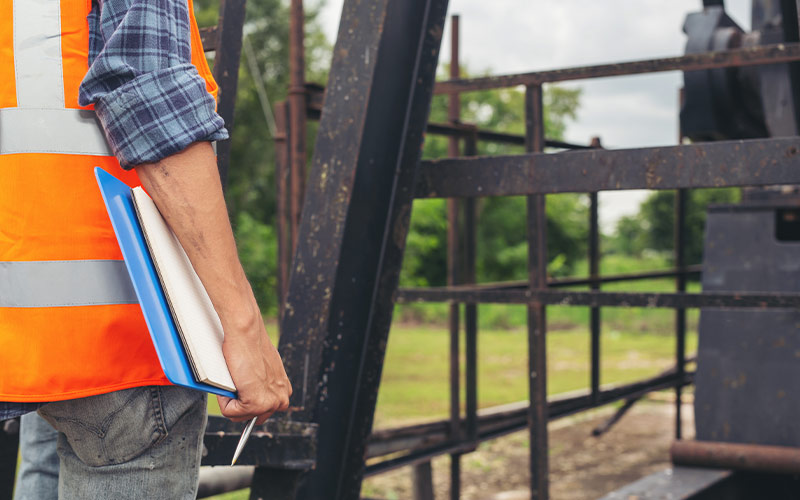
Balcony inspections under California’s SB326 regulation can feel like a daunting responsibility. Many property managers and HOA boards ask the same critical question: What are the common mistakes made during SB326 inspections, and how can they be avoided?
Addressing this concern early can mean the difference between a smooth compliance process and costly corrections later. Avoiding mistakes not only protects residents but also saves time, money, and stress. Whether managing inspections internally or partnering with an SB326 report generation service, understanding potential pitfalls is essential for a successful outcome.
Understanding the Purpose of SB326 Inspections
SB326 requires condominium associations to conduct periodic inspections of exterior elevated elements (EEEs) like balconies, decks, and stairways. The goal is simple: ensure structural safety and prevent accidents caused by deterioration or poor construction.
A properly conducted inspection results in a detailed report that documents the current condition of all EEEs and provides recommendations for repairs or maintenance. Mistakes in this process can compromise both compliance and resident safety.
Common Mistakes to Watch Out For
1. Incomplete Inventory of Exterior Elevated Elements
One of the most frequent errors is failing to create a comprehensive inventory of all EEEs. Inspectors must carefully document every balcony, deck, and stairway that meets the criteria for inspection.
Overlooking even a few elements can leave a building non-compliant and expose it to liability risks. Professional SB326 report generation service providers typically use advanced tracking tools to ensure that no structure is missed.
2. Insufficient Visual and Physical Inspections
While SB326 allows for visual inspections as a first step, relying solely on surface observations can result in missed problems. Structural damage often hides beneath finished surfaces, especially in areas with high moisture exposure.
Effective inspections involve minimally invasive methods like moisture probing or using borescopes to view hidden areas. Without these techniques, inspections may fail to identify critical safety hazards.
3. Poor Documentation and Reporting
A report that lacks clear, detailed findings can be as problematic as no report at all. Common documentation mistakes include:
- Vague descriptions of damage
- Missing photographs
- Inconsistent terminology
- Lack of prioritized repair recommendations
Partnering with an experienced SB721 report generation service provider, many of which also support SB326 needs, ensures that reports meet regulatory expectations and are ready for submission.
4. Using Unlicensed or Unqualified Inspectors
SB326 requires inspections to be conducted by licensed architects, civil engineers, structural engineers, or certified building inspectors. Hiring unlicensed individuals can invalidate the inspection and expose the association to fines.
Always verify credentials before commissioning an inspector, and ensure that their license is current and relevant to the scope of work.
5. Ignoring Minor Issues That Indicate Larger Problems
It can be tempting to downplay small cracks, minor corrosion, or isolated instances of rot. However, these often signal larger, systemic issues that could compromise structural safety over time.
Comprehensive inspections view small defects as potential warning signs rather than isolated flaws. Early identification of problems allows for proactive maintenance, avoiding costly emergency repairs down the road.
6. Failure to Plan for Repairs and Reinspection
Completing the inspection report is not the final step. Associations must also act on recommendations, complete necessary repairs, and schedule follow-up inspections if required.
Failure to address deficiencies within the specified timelines can lead to non-compliance, additional inspections, and increased liability.
7. Delaying Inspections Until the Last Minute
Waiting until just before the compliance deadline creates unnecessary stress. Last-minute inspections often cost more and leave less time to schedule needed repairs.
Early scheduling allows property managers to select qualified inspectors, negotiate better rates, and address any discovered issues well before regulatory deadlines.
Practical Advice for Avoiding These Mistakes
- Work with experienced professionals: Select providers offering specialized SB326 report generation service to ensure thoroughness.
- Use comprehensive checklists: Ensure every exterior elevated element is inventoried and evaluated.
- Incorporate minimally invasive techniques: Go beyond surface-level observations to catch hidden defects.
- Maintain detailed, standardized reports: Clear language, annotated photos, and prioritized recommendations are essential.
- Verify licensing: Always work with licensed engineers or inspectors with SB326 experience.
- Address issues promptly: Develop repair plans immediately following inspections.
- Plan inspections early: Avoid the rush by scheduling inspections months in advance of deadlines.
Real-World Example: Lessons from a Large Complex
In a 150-unit condominium complex in Southern California, an SB326 inspection initially overlooked several stairways tucked behind landscaping. The oversight was discovered during a later review, forcing a second inspection phase and exposing the HOA to additional fees.
Working with a seasoned SB721 report generation service provider that also handled SB326 projects could have prevented this costly error by ensuring a complete inventory and systematic approach from the beginning.
Technology’s Role in Minimizing Mistakes
Modern tools like AI-powered inspection platforms, drones, and moisture detection devices significantly reduce the chance of human error. AI systems assist by analyzing inspection images, flagging potential concerns, and streamlining report generation.
Integrating technology into inspections not only improves accuracy but also speeds up the entire process, helping associations stay ahead of compliance deadlines.
Final Thoughts
Mistakes in SB326 balcony inspections can have serious consequences, but they are entirely preventable with the right approach. By working with licensed professionals, adopting a systematic inspection process, and using technology strategically, property owners and HOAs can ensure full compliance and protect resident safety.
Partnering with an experienced SB326 report generation service helps navigate these inspections smoothly, while services like SB721 report generation service ensure all compliance needs are met for multifamily buildings.
If any questions arise about SB326 balcony inspections or avoiding common mistakes, feel free to leave a comment below. A response will be provided as soon as possible to support your compliance journey.
